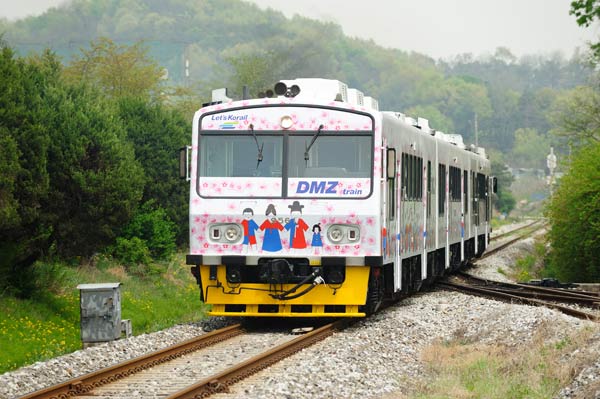 |
|
The DMZ Train service, running between Seoul and Dorasan, was reinstated on May 4 after being suspended in 2009 because of a security incident. Photos provided by Korail to China Daily |
| Special: China and South Korea cultural bonds |
| A bite of South Korea |
But look a little closer, and you will find that the beach has barbed-wire fencing that cuts inland just past an observatory, and military personnel watch over visitors. More than 1 million people visit the site each year, according to the Seoul-based Korean Tourism Organization.
The Unification Observatory overlooking the beach is at the eastern tip of a 240-kilometer-long demilitarized zone that roughly follows the Earth's 38th parallel line and separates the Republic of Korea from the Democratic People's Republic of Korea.
Running from the mouth of the Imjin River to Goseon, where the Unification Observatory is located, the zone stretches 2 km on either side of the Military Demarcation Line (international border) drawn up following the Korean Armistice Agreement of 1953, and accounts for approximately one-fifth of the total land area of the peninsula.
For tourists and residents of the ROK, the spot is as close to the DPRK as they can get.
The zone has six rivers, one plain, two mountain ranges and rare species of plants and animals. Because it was largely off-limits for humans for the past 60 years, it has become an ecological treasure house that Seoul is attempting to have UNESCO declare as a world biosphere reserve.
The Gangwon-do DMZ Museum, where visitors can enter after first signing in at the Unification Observatory, reflects the many aspects of the zone - from the history of the peninsula's division to the physical and psychological scars it left on Korean people. The museum also houses exhibits that bear instances of cooperation between the Koreas.
